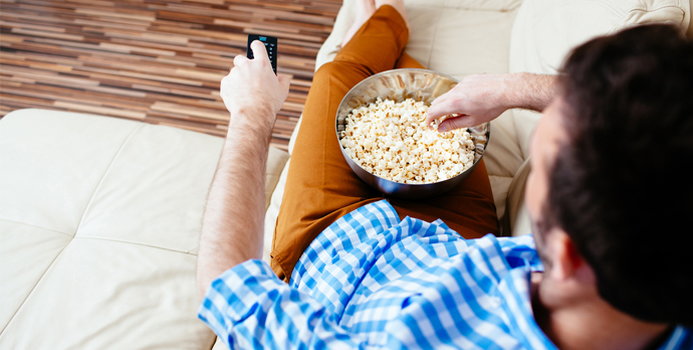Are you tired of overeating but not sure how to kick the unhealthy habit? Do you find yourself unable to shed pounds, or are gaining weight despite your best weight loss efforts? Fortunately, if you suffer from a food addiction, several strategies can help you fight it.
1. Track What You Eat
If you suffer from a food addiction you probably don’t know how many calories you’re consuming in a day, but recording what you eat helps cut calories. Set a goal based on your body’s needs, which is often 2,000 to 2,500 calories per day for healthy weight management, and 1,200 to 1,600 calories daily to shed pounds. A 2012 study published in the Journal of the Academy of Nutrition and Dietetics found that using food journals is associated with increased weight loss. Try writing down what you eat, with corresponding calories, in a journal — or use the USDA’s free online food tracker.
2. Don’t Eat Alone or While Watching TV
Have you noticed that you end up eating more when you’re alone or while watching television? TV can distract you when you’re eating, so you’re not thinking about feeling full and regulating food intake. If you’re an emotional eater who binges at home alone where nobody can judge you, make it a point to eat meals and snacks with family or friends.
3. Fill up on Water
Drinking lots of water isn’t a cure for food addiction, but it’s a good strategy to trick your body into feeling full — which makes it easier to eat fewer calories. One study published in 2009 in Obesity found that drinking a large glass of water (about 2 cups) before meals caused study subjects to eat less and lose weight at a faster pace than people who didn’t drink water before meal time. If you’re not a fan of water, try drinking it cold or flavored with chunks of fruit.
4. Choose Non-Food Rewards
If you suffer from a food addiction you may be choosing food to reward yourself, leading to temporarily happiness from food. One often effective strategy for kicking food addiction to the curb is to reward yourself in ways other than eating — such as watching your favorite TV show, going shopping, or getting a massage.
5. Replace Desserts with Protein Smoothies
Eating too much sugar is often associated with food addiction because sugar is known to be an addictive substance. If you have a sweet tooth, try satisfying it with fruit-flavored high-protein smoothies. Protein keeps you satisfied and full for longer periods of time than treats, and the sweet flavor of fruit (and honey if desired) curbs any sweet tooth. Use the following basic guideline for making customized protein smoothies:
- 1 ½ cups of skim milk, protein fortified almond milk, or soy milk
- 1 scoop of chocolate or vanilla protein powder
- Fruit of your choice
- 1 teaspoon of honey, if desired.
6. Eat Protein and Veggies First
Protein is a nutrient that boosts satiety the most, according to one 2008 review. Fiber found in veggies also helps fill you up without the extra calories. So, choose healthy protein foods — like lean meats, poultry, egg whites, legumes, Greek yogurt, cottage cheese, low-fat milk, and tofu — and a variety of vegetables before filling up on other foods.
7. Seek Professional Help
If you suffer from binge eating disorder, you may require professional help to break food addiction, according to the National Eating Disorders Association (NEDA). NEDA describes the following as being symptoms of binge eating disorder:
- Lack of control over binge eating episodes
- Eating until uncomfortably full
- Eating more rapidly than usual
- Eating when you’re not hungry
- Eating alone due to embarrassment about large quantities of food being eaten
- Feeling guilty, depressed, distressed, or disgusted after an eating binge
If you suffer from binge eating disorder, a professional can help you try different types of behavioral therapies or medications.
[Image via Getty]



